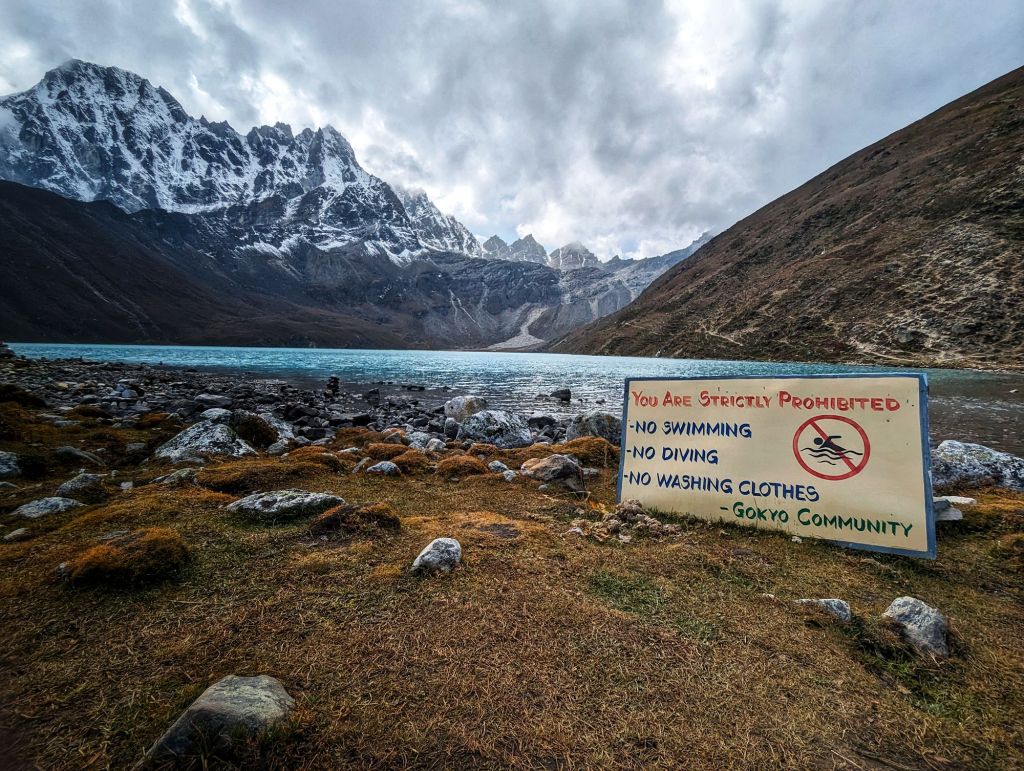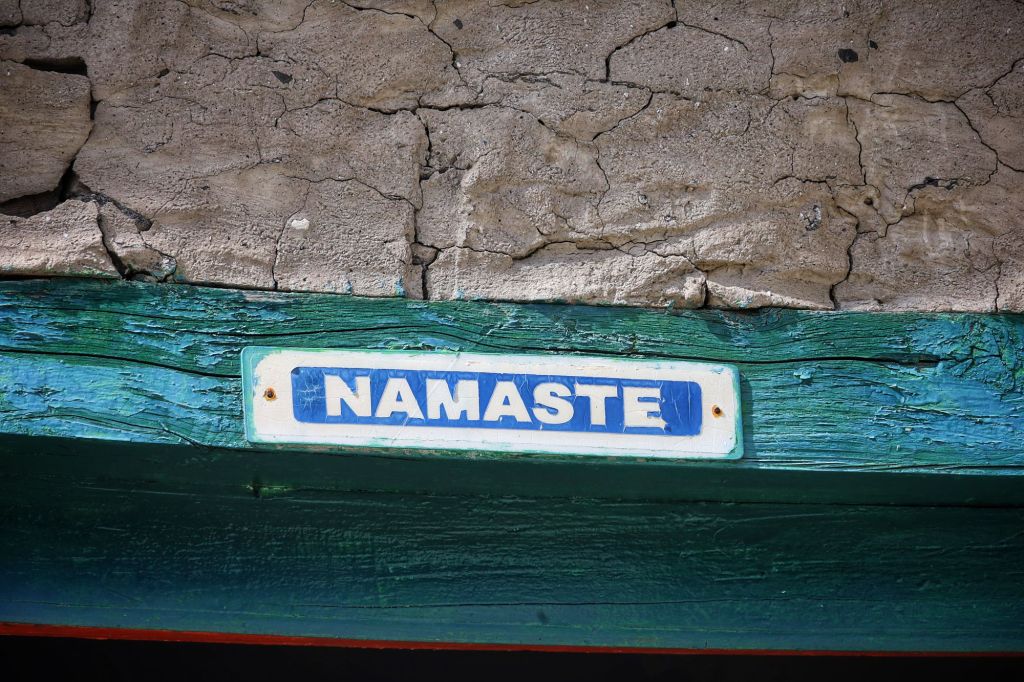I should have realized I was in trouble when I didn’t have to get up to pee in the middle of the night last night.
Instead, I congratulated myself on not having to crawl out of my toasty sleeping nest on what turned out the be a wicked-cold night. Guest houses give you a roof over your head, but they do not heat. Middle-of- the-night potty runs are the absolute worst.
I did get plenty of sleep, though, so I didn’t start today as crabby as I was yesterday. Undortunately, my body was not working any better today than it did yesterday, and I wasn’t even asking as much from it.
- Starting location: Thangnak, 4,685m (15,366 feet)
- Ending location: Gokyo, 4,800m (15,748m)
- Cumulative elevation gain: 304m (998 feet)
- Distance traveled: 2.95 miles in 2:36’14” active time
- Average pace: 52:56’ per mile
- Slowest mile: 1:00’25”
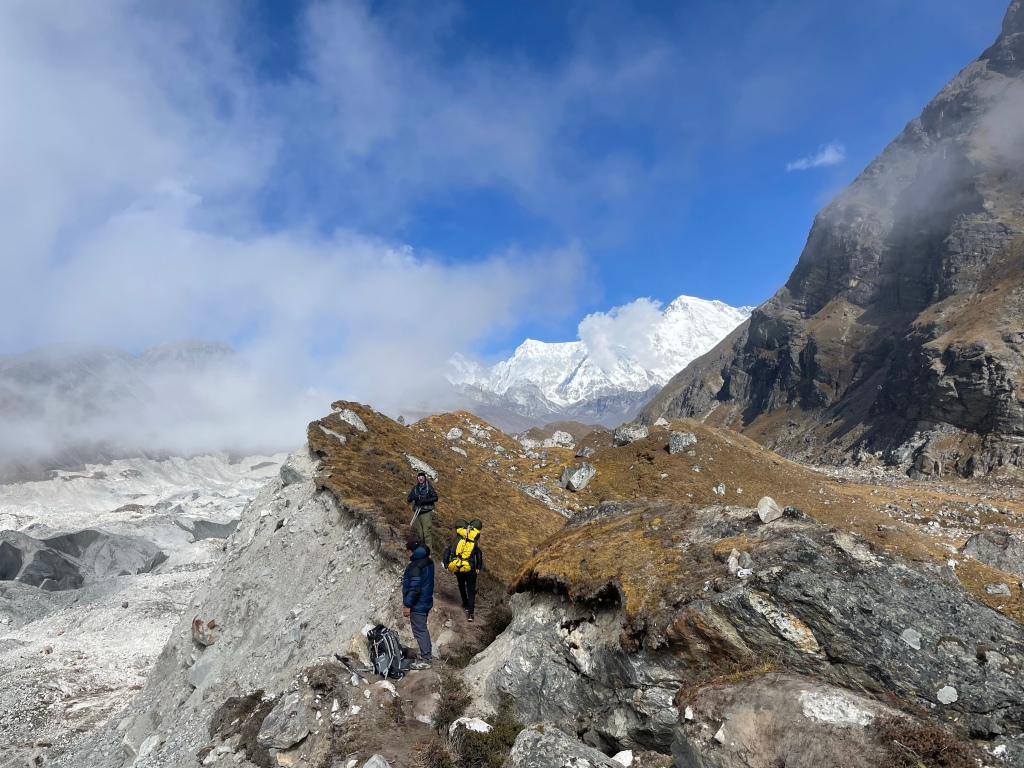
I knew the Ngozumba Glacier would be challenging, but I didn’t expect it would be because my body wanted to fight me the whole way.
At the end of the hike yesterday, I’d told Dustin I’d developed Stupid Feet, a condition in which your feet seem to ignore half the things your brain tells them. Lots of tripping, kicking rocks, stepping into cracks.
Today, after one too many stumbles, he asked if I still had Stupid Feet. I told him, no – today I felt whole-body cold and stupid.
That made it a little tough to admire the glacier, which was my whole goal for the day, but I did my best.
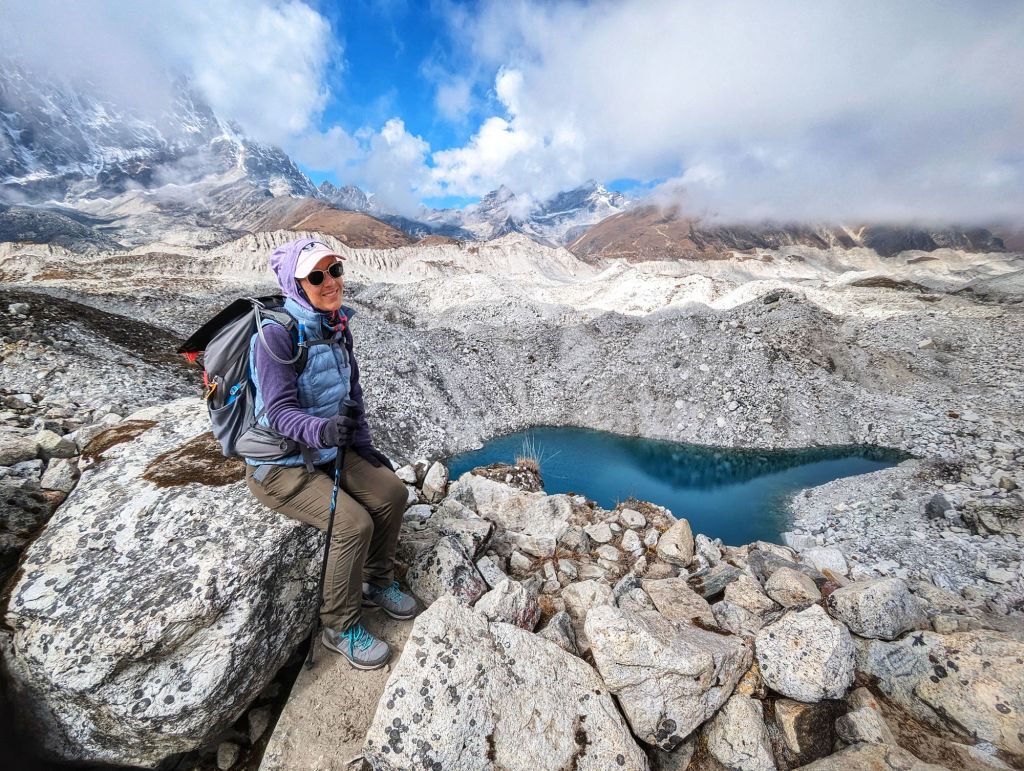
The Ngozumba Glacier is nearly as big as the Khumbu Glacier, stretching as far as you can see in either direction from where we crossed. Yesterday, we had asked a pair of German trekkers, who’d just come across it in the other direction, how long it took them to cross the glacier.
“Oh,” the woman said in complete sincerity. “There’s no glacier there any more.”
Then just a few minutes ago in the dining hall here in Gokyo, I heard a guide ask his group how they had enjoyed the glacier.
“It was very dirty,” a man replied. “You should really clean up your glaciers.”
I do not know if he was joking.
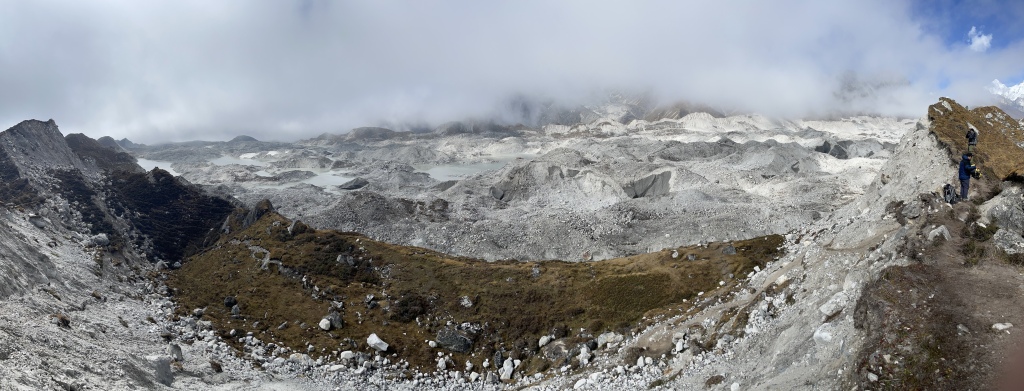
Active glaciers are dirty. Glaciers grow and grow under yearly snows until the snow compacts and becomes too heavy to stay where it is, then it starts flowing downward. In cases like this, where the glaciers are so big, they come to look like literal rivers of ice winding their way between high mountain peaks. As they flow (as slowly as the idiom about glacial speed implies) they shove rocks in front and to the sides, and they file away the sides of the slopes they pass between, collecting huge amounts of rock and dust on their surfaces in the process.
After plate tectonics, glaciers are one of the most significant geologic shapers of the surface of this planet. Their power is mindblowing.
But, yeah… someone take a vacuum out there.
No, no. Be nice.
I, too, particularly enjoy gazing into the blue crevasses of the high mountain glaciers where they haven’t yet started their dirty work. They can almost glow when the sunlight is right, shining in their caps of white snow.
But working glaciers are a different kind of awesome.
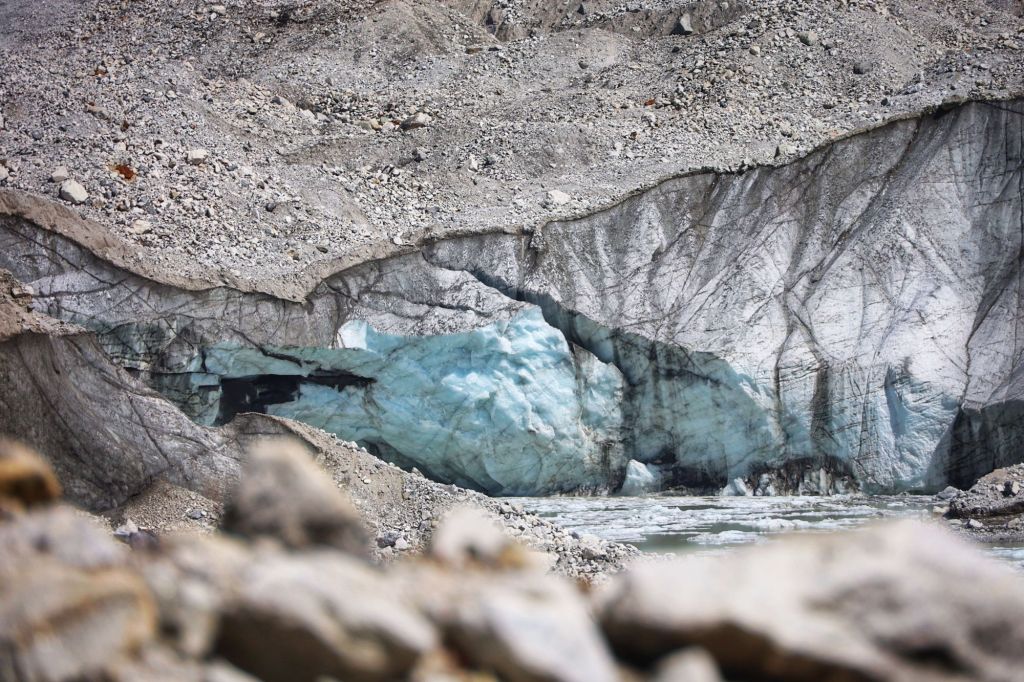
Like their cousins all over the world, these massive Himalayan glaciers are shrinking. I considered their rocky shoulders as we picked our way carefully up and down them. On the inner side of the curve, where we started, the moraine was a mere 100 feet high. As we climbed up the 368-foot moraine on the far side, I mused (between bouts of suffering) that there had once been enough ice to push the rocks this high. Was there even enough ice left in the track that the glacier could flow, or did it now stay where it was and melt a little more, year over year? How old were the ice faces we could see above the melt ponds??
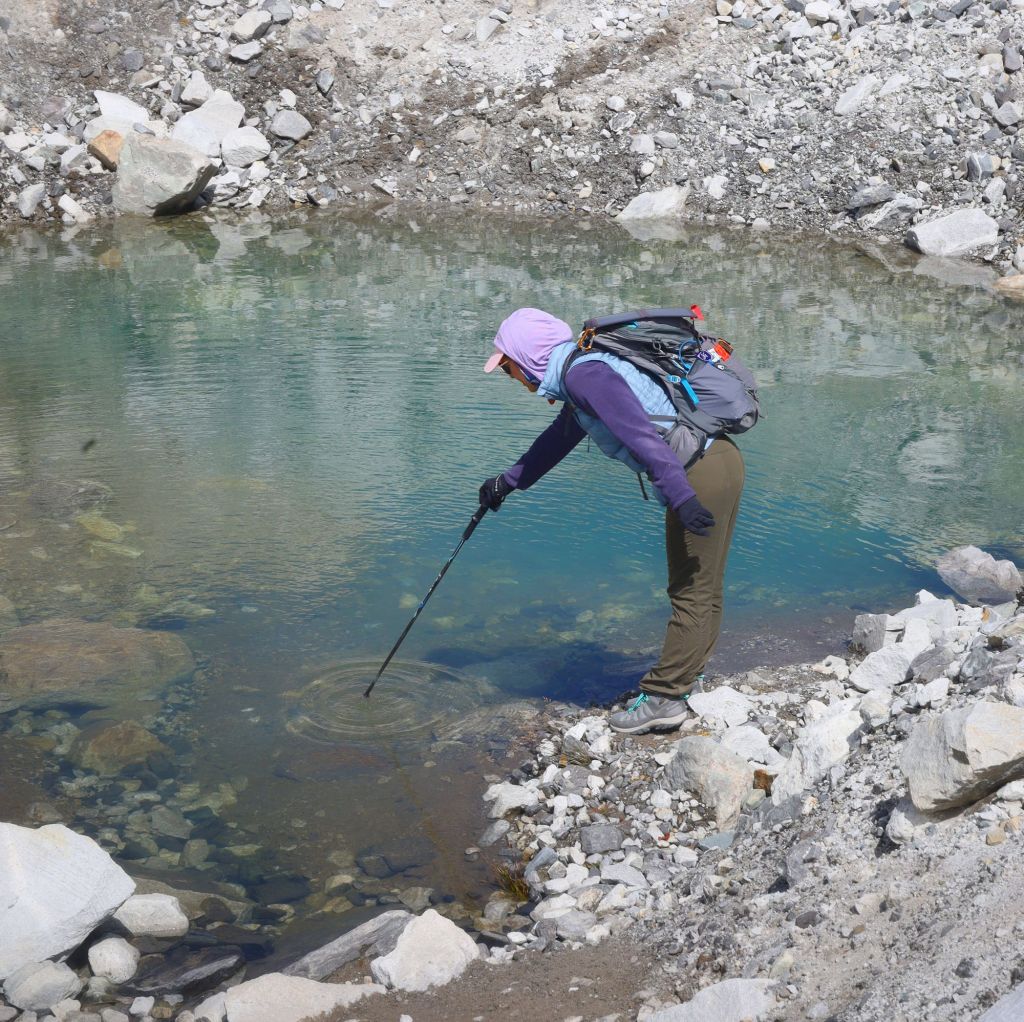
[Upon later reflection I remembered that glaciers, like rivers, carve themselves deeper and deeper into their channels, so it’s not quite as dire as dry-brained Laura was thinking, though it still isn’t great.]
By the end of that 368-foot climb nearly straight up (you have no idea how great switchbacks are until you don’t have any), all my curiosity had been replaced with self-pity. Of all the days for my body to decide it was over this trip, this was a really dumb one. We’d hardly done anything, comparatively speaking.
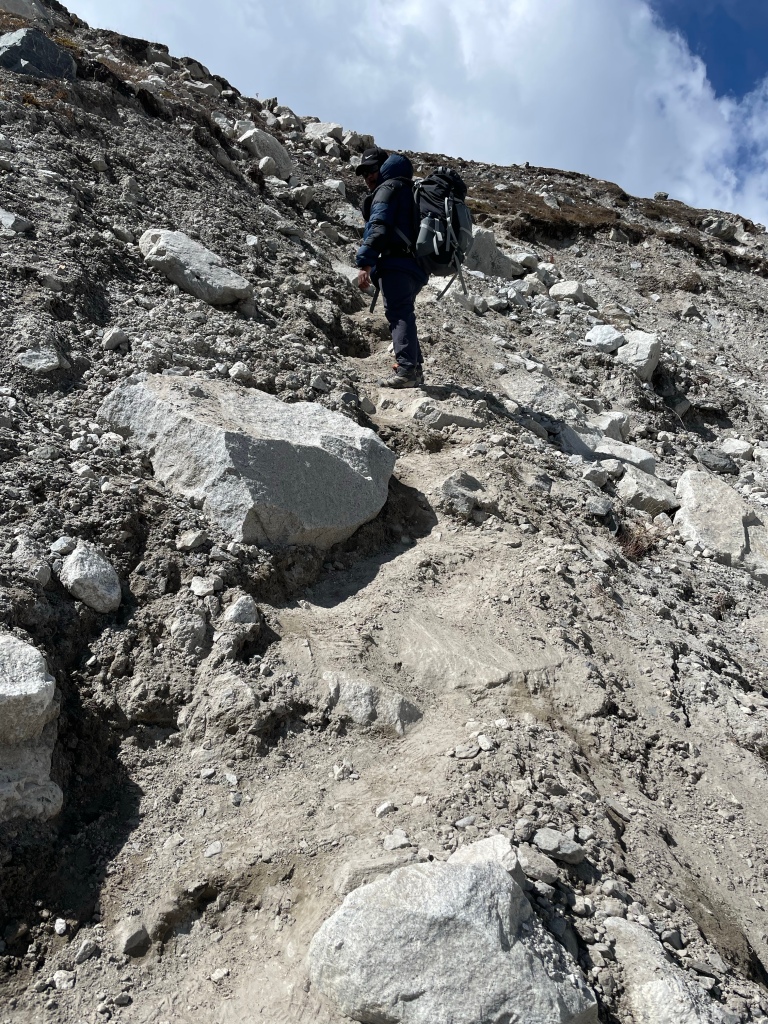
This is a lot to ask at 15,600 feet.
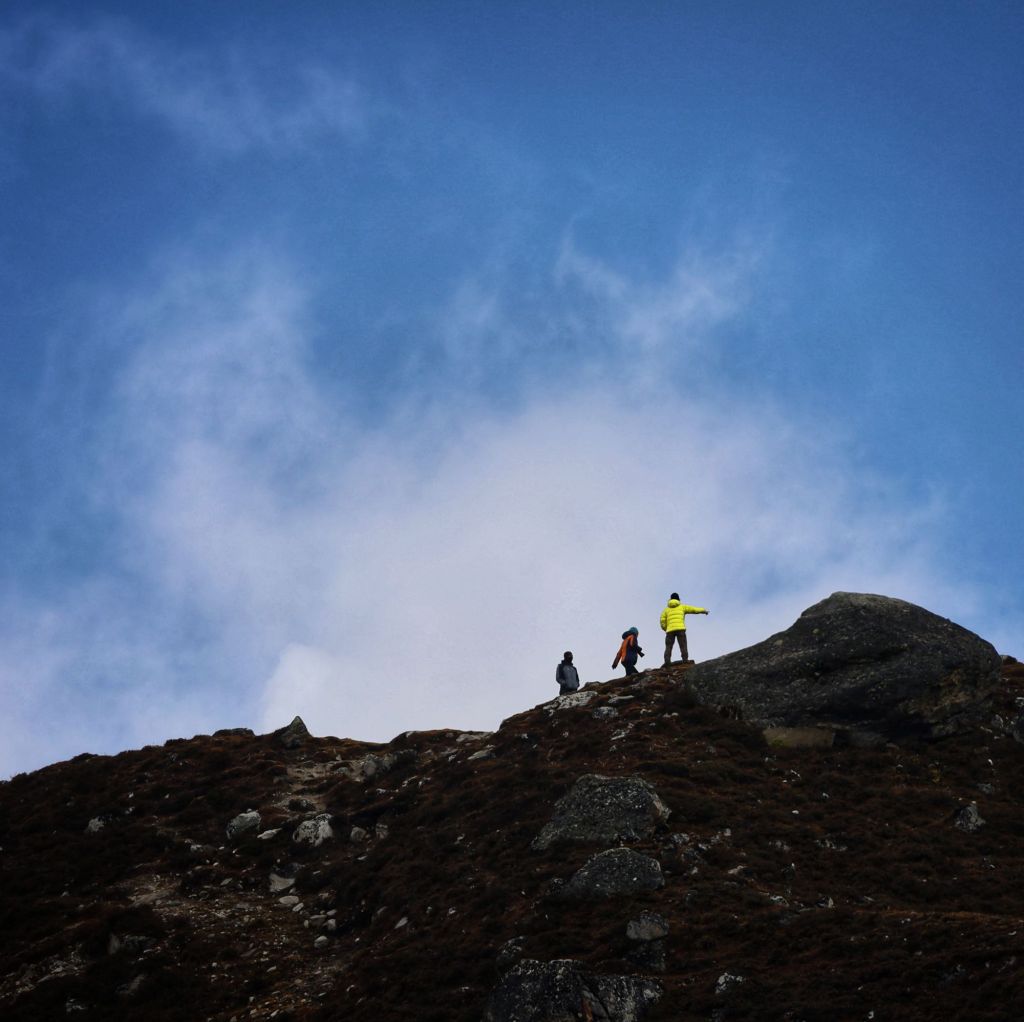
I tried to make up for some of my slowness as we came off the moraine and headed for the hotel. I really had to pee, and convenient rest-stop rocks are hard to find when the trail is visible from above and below.
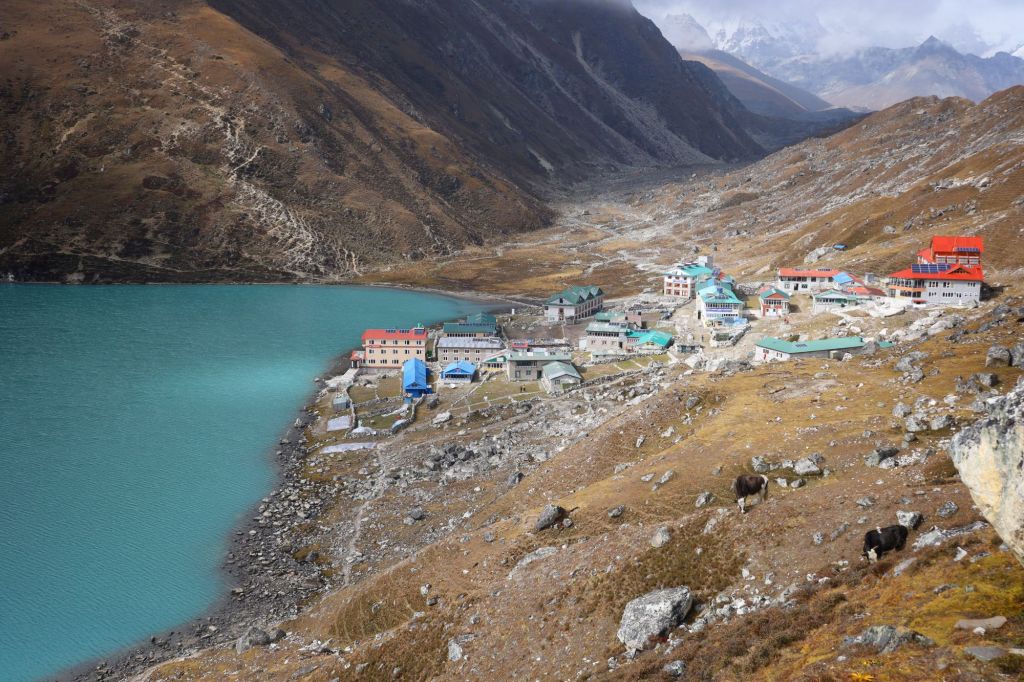
As I finished my business in the perfectly adequate guest house squatty-potty, I realized I hadn’t taken a single rock-break during the entire three-hour hike, which has not been my pattern during this trip. I hadn’t even finished the meager one liter of water I’d brought along for today’s hike.
Oh.
From the moment we left Lobuche, three days ago, we’ve been responsible for filtering our own water, and the slightly complicated nature of that process, along with my apparently perfect acclimatization to these altitudes, has allowed me to slack off a little on the near-religious habit of water-drinking I’d cultivated in early days of this trip. I certainly hadn’t been drinking the recommended three liters per day.
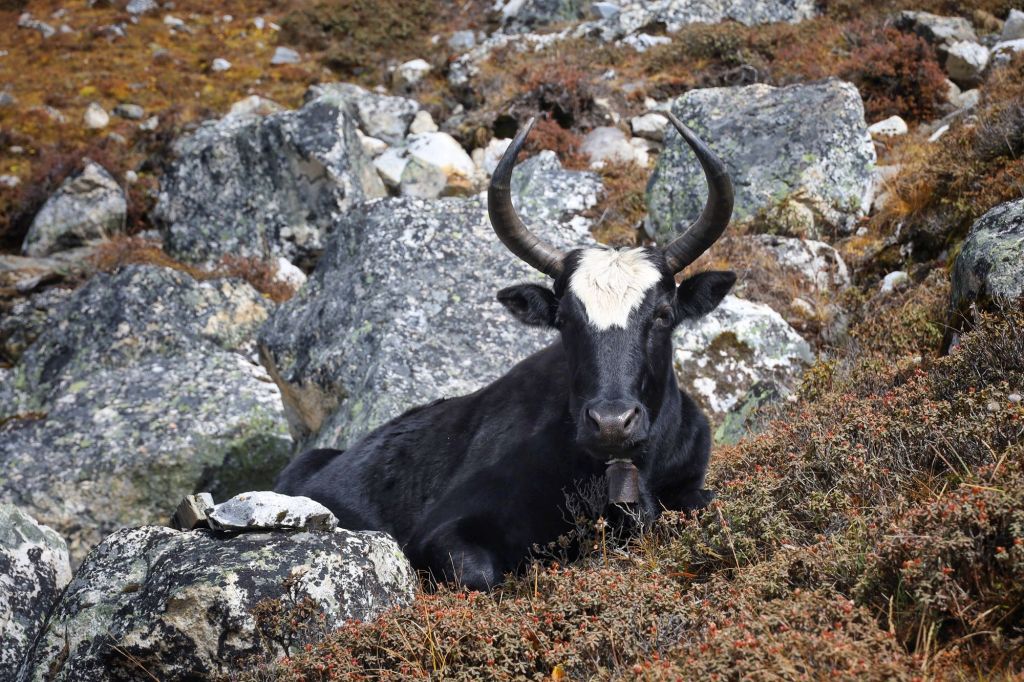
So I sat down in the guest house in Gokyo with an excellent view of the lake and the incoming snow, and determinedly started putting down the water.
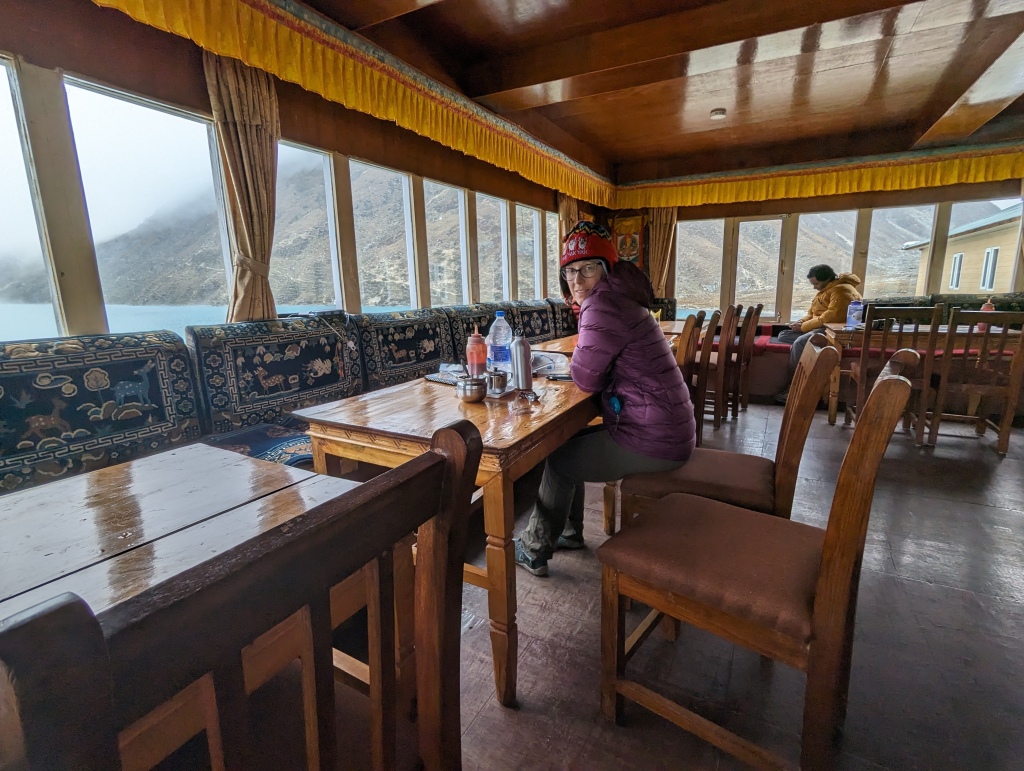
The Gokyo guest house was really nice. Gorgeous views out over the lake, and my back to the stove. Even a nice yak-dung fire isn’t a real match for 20 degrees outside, though. Yak hat inside, it is!
I stopped ten minutes ago, at 7pm, hoping that – haha – I won’t have to get up in the middle of the night. But bedtime is 8pm, and well-hydrated Laura never got to sleep through the night. So.
I basically intend to sleep in my clothes tonight anyway. The forecast suggests an overnight low of 10 degrees F, and we’re supposed to start our last pass at 5am. The spirit is willing, but the body really can’t bring itself to change shirts in temperatures like that.
Will that make trudging down the hallway in sandals and a headlamp at 2am any more bearable? Probably not, but odds say it’s the correct trade-off.
Reporting back tomorrow from the beginning of the final descent.
